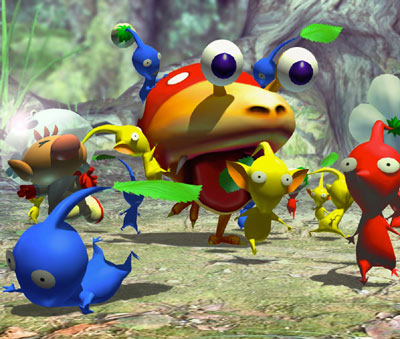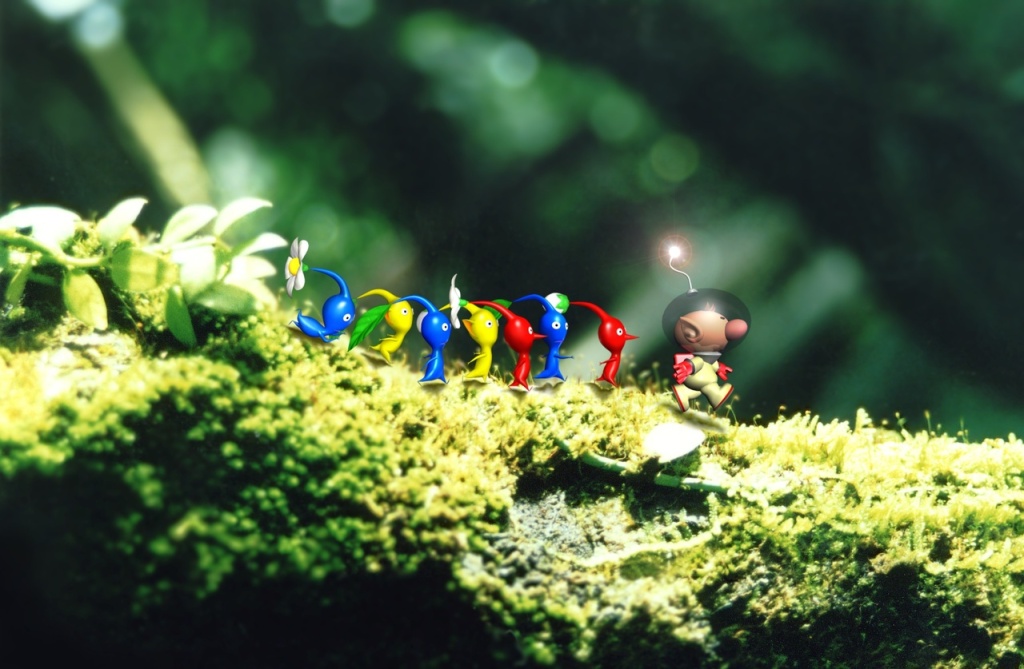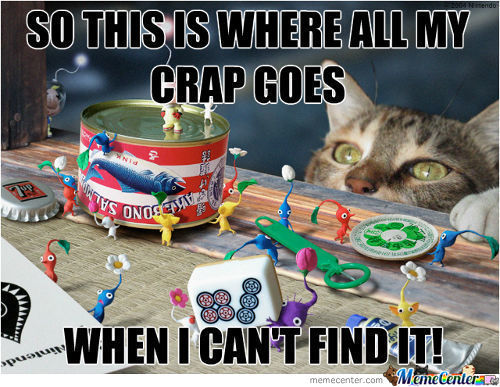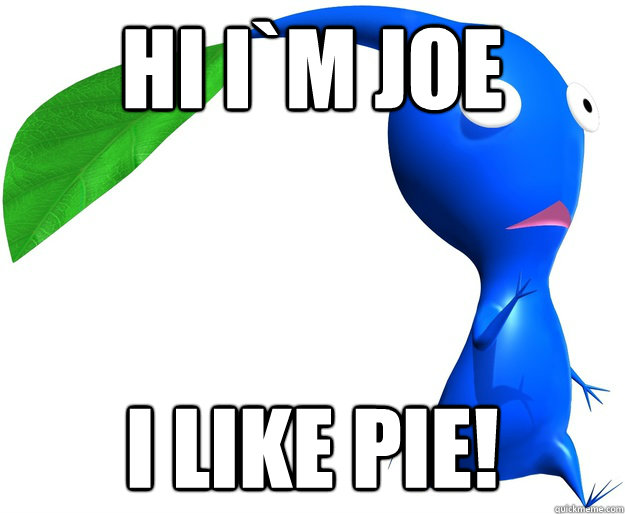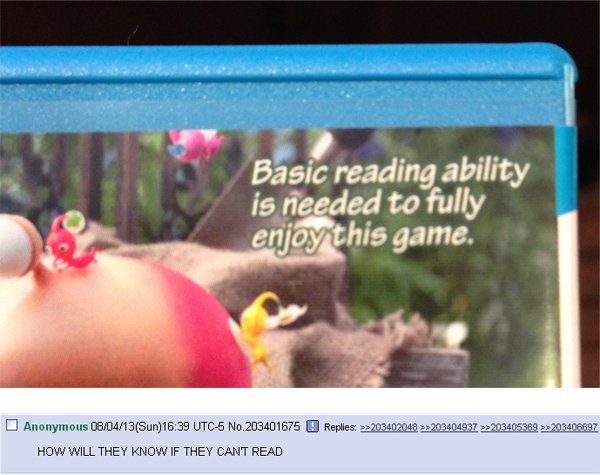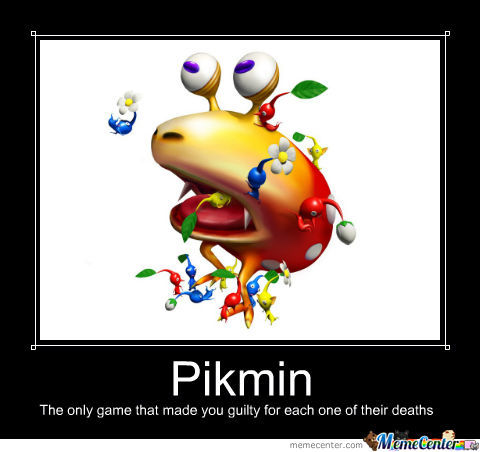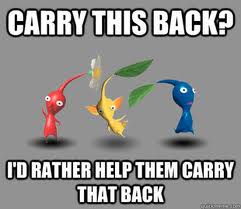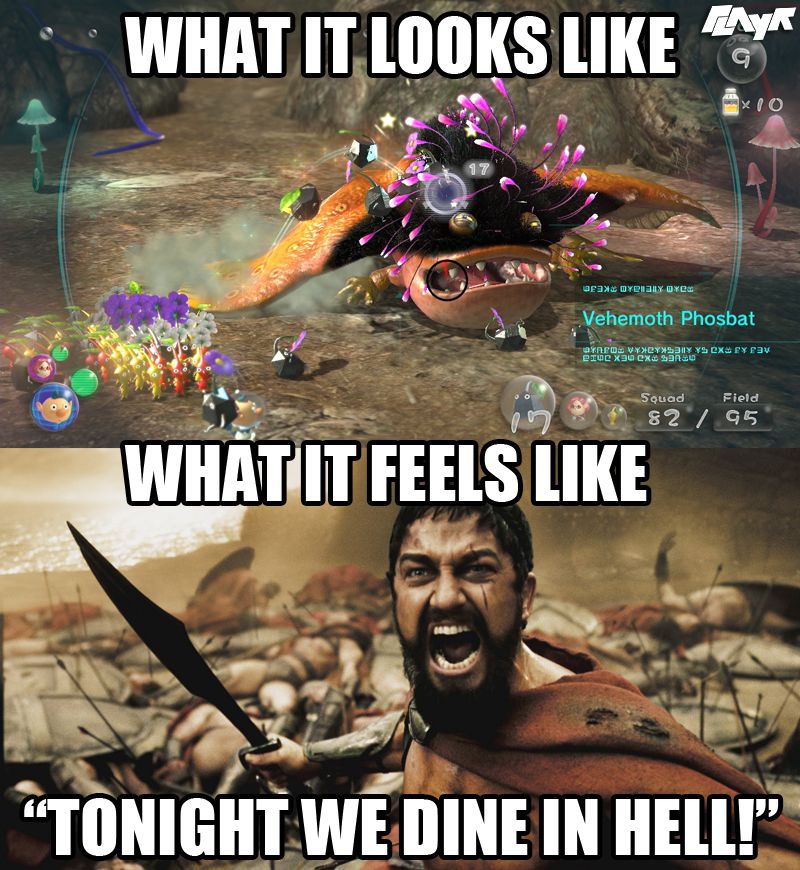For the past decade and a half, Pikmin has been my most favorite game of all time.
As a software engineer with an affinity for automation, tooling, and efficiency – Pikmin struck a chord with me like no other game had before. Pikmin is a unique twist on real time strategy games (such as the command and conquer series, warcraft, or starcraft), where resource gathering equates to winning the game. That is, Pikmin is an RTS without a strong battle tactics mechanic.
Instead of becoming the greatest war general, Pikmin simply encourages you to gather enough resources to move forward while using time wisely. What sets Pikmin apart from many other video games in the genre is that the game has concurrent goals. It is complex enough to allow multi-tasking on an impressive scale. Whereas a typical RTS would have a singular goal (gather some ore, build some tanks, crush the enemy), Pikmin’s goals are distributed – you need to collect X pieces of a ship, and pieces can be collected in paralell, with one team of Pikmin working on a task blocking one goal while another team works towards another.
In Pikmin, instead of a god-like overview of the entire world, you are a tiny spaceman who can only manipulate the resources within your field of view. You are effectively limited to doing only what one person can do in real life – one thing at a time in the place where you are. Instead of clicking a map 2 miles away to assign a new directive to some tank, the strategy to Pikmin becomes efficiently subdividing your army of Pikmin into concurrent tasks – with the occasionally infuriating limitation of only being one person.
Your little spaceman only moves so quickly, and he’s purposely weak, as are your pikmin. There are monsters both small and large throughout the game; walls to break down; bridges to build; heavy items to move back to camp; and more – and one pikmin or one spaceman is effectively useless on their own in almost all cases. No monsters can be defeated with the spaceman alone, and breaking down a ‘beginner’ (soft) wall would take the spaceman or a single pikmin half an hour to break down, never mind walls made of stone that your spaceman cannot damage at all.
Put simply, your protagonist is not a one man team, and a spaceman behaving as a one man team will lose the game.
To beat the game, your spaceman needs to task 30 pikmin to breaking down that wall, so it falls in two minutes rather than thirty. To beat the game more quickly, your spaceman needs to assign one team to breaking a wall, while another is set to build a bridge, while a third under your direct control attacks some monsters to bring home spoils from monsters to create more pikmin.
Further strategy ensues when you’re given three different types of soldiers later in the game; red pikmin are strong fighters and can walk in fire; blue can walk in water but are quite weak; and yellow can jump high and carry ‘bomb rocks’ (for stone walls). If you’re familiar with the early 90s blizzard game The Lost Vikings, or perhaps Lemmings, Pikmin is those two games blended together – on steroids.
The game employs a day/night mechanic where each “day” of game time is only 15 minutes of time, and any pikmin left scattered around the level at the end of the day are eaten. So, accomplishing multi-day/multi-hour achievements takes planning and strategy. The game gives you a generous 30 days (7.5 real-life hours) to beat the game – my greatest record was 19 days (4.75 hours), this after dozens of times through the game, but record holders have beaten the game in 9 days (2.25 hours).
As a younger me, Pikmin appealed beyond other games because it allowed me, a software engineer (read: a person who enjoys solving puzzles), the opportunity to solve a well-understood puzzle with enough complexity built in for many possible solutions to exist. The game provided a clear goal, simple to understand tools to get the job done, a scope, and a generous timeline – a dream software project if I’ve ever heard of one.
I distinctly remember building my own hobby software projects while in college and looking forward to such dream projects in my dream career to come – “Man, working in software is going to be like playing Pikmin all day every day!”
How adorable youthful naivety and ambition can be. Right? Right.
Real life software projects are like any other project anywhere ever, limitations abound. There’s always one or more of the following: not enough time, too little budget, inexperienced teams, unknown scope or requirements, surprises, political land mines, and more. Sorry to say, the dream software project is a dream.
—
Back in my college days, while playing the game with my friend Greg (my 6th or 7th play through, his second or third perhaps), we were talking about the philosophical aspects of what made the game so addicting to us. Whereas many ‘core gamers’ dismissed the game as a childrens version of an RTS war game, we were hopelessly enamored with the game’s charm and subtle complexity.
During our discussion that evening it occurred to me that the video game Pikmin would make for an excellent psychological evaluation for real-life managers. Think about it – the game is essentially a management simulator – you are one person with limited power on your own, but with effective management skills you can accomplish amazing goals you could not have accomplished on your own.
My youthful idea for the management test worked like this: Have the manager play through the game once, and watch them play.
The first time through the game, the player is simply discovering the rules and boundaries, the scope of what he or she is up against.
During this discovery phase of the game, much can be learned about how a player approaches new challenges that he or she may have little interest in achieving. Does the player dismiss the game due to a lack of interest? Does the player enjoy themselves despite a lack of interest? Does the player regard her little pikmin employees as a breathing animal to protect and nurture, or as a disposable means toward the ultimate goal? How does the player react the first time they walk a red pikmin into a pool of water, do stand by and watch the pikmin slowly drown during that generous ten seconds they have to rescue the pikmin with a single button tap? Do they panic? Do they even try to save it?
Further – the pikmin are not robots, they mimic real life humans in a surprisingly and infuriatingly real way – that is, occasionally these little minions have a mind of their own and decide they want to do something else.
What better way to test a candidate’s cool than place a video game in his hands that he can’t truly control? Perfect.
Later in the game, with experience under their belt, the games entire scope and toolset has been revealed – but, there are 20 pieces to collect and only 15 game days left – the player must multitask, or die. A prodigy player may already be multitasking from the beginning, but a mere mortal will likely get to day 27 with 9 pieces remaining, which provides potential for another psychological insight – as the time pressure cooker ramps up, how does the player behave?
Suppose a player has a final piece left to collect, and they’re leading a team of 10 red pikmin (who drown and water) joined with 90 blue pikmin (who do not drown). The player discovers the final piece simply needs to dragged across the water to the home base – but time is closing in. Does the player take a few seconds to subdivide their team and leave the red pikmin safely in shore, or do they not? What does it mean when the player chooses one way or another? Is goal greater than the journey, or the other way ’round?
In college, as a young idealist with a myopic tunnel-vision non-empathetic world view of career, I thought pikmin would be the perfect test to find the most efficient and effective team leaders – which to me was very narrowly defined as a person who would gain maximum efficiency from his team. Back then, my ideal manager would have been a manager who would focus on and appreciate one of my personal strengths (naturally, right?) as an employee – clever efficiency. I am very happy that *good* real life managers are not so one-dimensional.
Fortunately real-life managers are multi-dimensional humans with differing personalities, strengths, and weaknesses. While one person may prioritize efficiency and adore employee’s such as myself, another may prioritize bulletproof quality, while still another may prioritize workplace culture. Indeed, an effective management team is, like all effective teams, a mixture of personalities – the whip cracker, and the cat-hearder; the single-minded goal seeker and the multi-tasking generalist; etc.
Pikmin makes for a great personality test because it mirrors real life in a simplistic, but beautiful, way. In many respects the game is a more entertaining and interactive larger version of Conway’s Game of Life. The game enforces limitations that drives many players mad (“The 30 day limit is stupid! I can’t win!”), it effectively requires the player to make choices and learn – it brings out the best and worst of players in very short order, all while presenting itself as a cute and cuddly “RTS game for children”. Incredible.
Perhaps a video game such as pikmin would provide an effective or fun way to screen or learn about candidate’s personality with a little more depth than “Tell me about your greatest success?”, or “What’s your greatest weakness?”. If I ever rule the world, or a small multi-national company (don’t worry, this won’t happen, I enjoy living life and video games.), I’d at least give the pikmin test a try.
—
Pikmin was first published in 2001 on the Nintendo Gamecube (amazon link), it was updated and re-released on the Nintendo Wii (amazon link). There are a number of sequels and spin-offs, I’ve documented some of those previously on this blog here.
Note that some of the screenshots shown in the post are from sequels rather than the original game. IMO the sequels are good, amazing even, but nothing compares to the original masterpiece.
Music: BT – These Hopeful Machines

